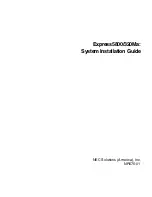
Advanced information
Transmit Control Blocks
Recommended value: 16. Range: 1 – 80.
Specifies how many transmit control blocks the driver allocates for adapter use. This
directly corresponds to how many outstanding packets the driver can have in its
"send" queue. If too few transmit control blocks are used, performance will suffer. If
too many transmit control blocks are used, the driver will unnecessarily consume
memory resources. Transmit Control Blocks range: 1-80
Smart Power Down
Recommended value: Enabled.
Designed for mobile computers, this feature helps extend battery life. When the
feature is enabled, the adapter automatically removes power from the adapter when
the LAN cable is disconnected from the adapter. Later, when the LAN cable is
connected, power to the adapter is restored. If the feature is off, power is applied to
the adapter at all times.
Intel Priority Packet: An Overview
Priority Packet is a traffic-prioritization utility that enables you to set up filters to process
high-priority traffic before normal traffic. Using Priority Packet, you can set up filters to
give priority to critical applications or users.
Prioritizing network traffic
To set up priority filters so that information from critical nodes or applications will be
sent according to priority, use Intel's Priority Packet. When traffic is prioritized at the
host or entry point of the network, network devices can base forwarding decisions on
priority information defined in the packet.
Priority Packet prioritizes traffic on the basis of priority filters—parameters you assign to
be applied to outgoing (transmit) packets. Using the Priority Filter Wizard, you can set
up predefined or custom priority filters on the basis of node (MAC) address, Ethernet
type, or various properties of the protocol and port. Priority Packet provides two methods
for prioritizing traffic, IEEE_802.1p tagging and Intel High Priority Queue. To use
Priority Packet, you need to enable the IEEE_802.1p Tagging and then install the Priority
Packet.
To enable IEEE_802.1p tagging on an adapter, do as follows:
1
In the Control Panel, double-click Network.
2
Select the adapter and click Properties.
3
Select the Advanced tab and enable IEEE_802.1p tagging.
To install Priority Packet, run the setup program on the Drivers CD. It is at
x:\prtpkt\setup.exe
, where
x
is the drive letter of the CD-ROM drive.
Note: IEEE_802.1p tagging increases the size of the packets it tags. Some hubs and
switches won't recognize the larger packets and will drop them. Check the
documentation for your hubs and switches to see whether they support 802.1p. If they
don't or if you're not sure, you have two choices: (1) you can use High Priority Queue
(HPQ) instead (see the next section) (2) you can configure the switch to strip the tags
from the packets and send them on to the next destination as normal traffic.
Using the LAN
11
Summary of Contents for 10/100 EtherJet
Page 1: ...IBM 10 100 EtherJet Mini PCI Adapter with 56K Modem User s Guide...
Page 4: ......
Page 6: ......
Page 10: ...x...
















































